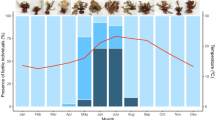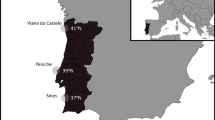Abstract
DR. NATHORST has certainly shown that many of the markings referred to Algæ by some authors might be tracks left by moving animals on a soft mud, but is there reason to suppose that there are conditions under which submarine surfaces of very soft mud with minute tracks have, or could ever have been preserved. On the other hand there is no question about seaweed having existed in Palæozoic and Mesozoic times, and either some of the markings in question are their prints, or no traces of them are preserved. Now it is an uncontroverted fact that even the most indestructible of all vegetable tissue, that of the Coniferæ, has been met with in the same condition of fossilisation, i.e. a projecting cast in sandstone on the under side of a slab, and without any internal trace of tissue or even of colouring due to carbon or iron, and Saporta has offered a satisfactory explanation of the origin of such casts. From the relative rarity with which terrestrial plants have been thus preserved, Nathorst almost derides Saporta's application of this explanation to fossil Algæ, yet it is by no means improbable that this may be their normal mode of preservation. The decay of dead olive-green seaweeds in water must be very rapid. The decomposition of some among them sets in almost immediately under water, and a colourless mucilaginous fluid is given off copiously. I have not watched the whole process of decay, but my impression is that the entire substance in some species would eventually pass away in a structureless glairy mass, and therefore that nothing but a hollow impression could ever be preserved. Casts of these would be more likely to be preserved in sand or mud than mere tracks, because the substance of the weed would occupy them, and prevent them from being immediately filled with the same quality of matrix as the surrounding rock, and until what would afterwards be a line of cleavage had been produced. So far therefore from its being exceptional for fossil seaweeds to appear as casts projecting from the under surface of the overlying mud, this is likely to be the normal condition in which fossil algæ are preserved. This is apart altogether from the question whether any of the Palæozoic markings are Algæ, for, these differ so considerably from any existing forms, that in the absence of internal structure it is quite unlikely that there will be any general agreement respecting them. These observations do not apply to the Rhodospermeæ, which scarcely enter into the question. Some simple experiments on the decay of seaweeds in fine sand under water, which any one at the seaside could make, would help to throw light on the subject.
This is a preview of subscription content, access via your institution
Access options
Subscribe to this journal
Receive 51 print issues and online access
$199.00 per year
only $3.90 per issue
Buy this article
- Purchase on SpringerLink
- Instant access to full article PDF
Prices may be subject to local taxes which are calculated during checkout
Similar content being viewed by others
Rights and permissions
About this article
Cite this article
GARDNER, J. Fossil Algæ. Nature 28, 53 (1883). https://doi.org/10.1038/028053a0
Issue date:
DOI: https://doi.org/10.1038/028053a0



